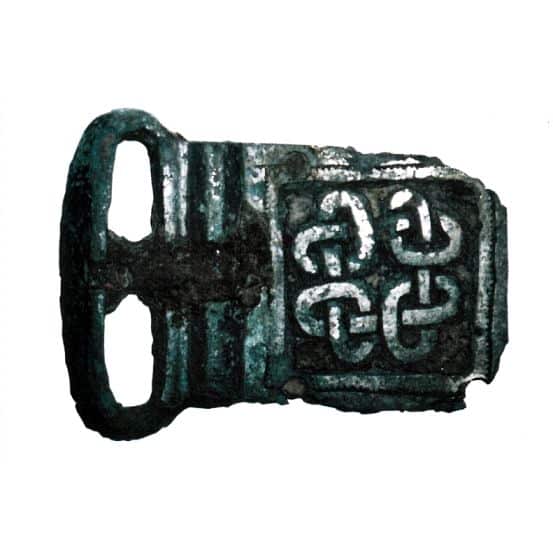Part of what people find most captivating about Old Norse mythology are the many Viking symbols it contains. Of course, there are the runes and their symbolic meanings, however, the Vegvisir and Aegishjalmr symbols really fascinate people. Just as fascinating, and with an even more mysterious origins story is the symbol many (wrongly) call the Valknut.
The symbol most people associate with the Valknut, featuring three interlocking triangles, is undeniably a significant Norse emblem. Yet, it’s a common misconception to label it as the Valknut. In this post, I will try my best to explain why this is so. Moreover, I will also share what I believe its true name is, as it is found in the Prose Edda.
The Valknut name for the triangular symbol
I expect some readers will be surprised there could even be any reason to discuss the Valknut name. The three interlocking triangles symbol is called Valknut by so many across the internet that surely it must be true? However, just because the use of a wrong name is widespread, doesn’t make it correct.
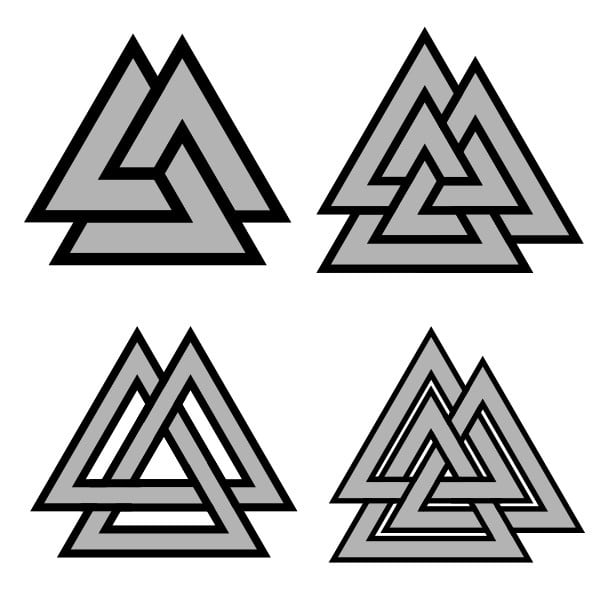
I should add however that the explanation I will provide, while supported by some scholars, still isn’t supported universally. In the end, you will have to make up your own mind about what you find most credible. There are some facts universally agreed upon though.
Some facts that are undisputed
- The name “Valknut” does not appear anywhere in any of the Old Norse texts. Not in the Prose, or Poetic Edda poems, Heimskringla or any of the sagas.
- While the origins of the Valknut name are unknown, it most likely came about several hundred years after the Viking Age.
- The symbol itself, the three interlocking triangles, is attested to both in Old Norse manuscripts as well as on artifacts. However, not by the name we use.
With such a well-known symbol, it obviously needed a name. I certainly do believe it had a name in the actual Viking Age. However, the most direct association between a name, any name, and the triangular symbol has been lost.
At some point then, possibly quite “recently” the name Valknut was given to it and it stuck. Even though there were no actual references anywhere for that name. It just sounds kind of cool, as it’s translated as the “knot of the dead/slain.” That in itself might have been enough.
A triangular symbol with no name
Interestingly, and here I hope your spidey senses are tingling, there is a name used in the Prose Edda for an otherwise unknown symbol. This is found in the Skáldskaparmál chapter 17, part of the Prose Edda, and goes like this:
“Hrungnir had a heart that is renowned, made of solid stone and spiky with three points just like the symbol for carving called Hrungnir’s heart has ever since been made.”
Translation by Anthony Faulkes, Professor of Old Icelandic at the University of Birmingham.
The mysterious “Hrungnir’s heart” symbol
This is the only mention of this symbol in the Prose Edda. However, from the way Snorri writes, this seems to have been a well-known symbol, both for Snorri and for his audience. It is in fact a symbol obviously made, or carved, numerous times and it has “ever since been made” in that way.
So, just to sum up where we are on the Hrungnir’s heart symbol, based on the little information we have.
- It is well known, so it should turn up in illustrations, runestones and other artifacts from the Viking Age.
- It is spiky and has three points.
- Hrungnirs’s heart was renowned. Moreover, we know from the story that he was brave when meeting Thor and his heart didn’t flutter. Then, shortly after his meeting Thor in a duel, brave heart and all, he was killed (of course) by Thor.
I will share some insight about how well-known the triangle symbol actually is, but it’s safe to say it surely fits this description. It is known from several runestones as well as from items found in the Oseberg burial ship. Furthermore, the symbol we know as the Valknut is decidedly “spiky” and it has three points.
Lastly, based on Hrungnir’s bravery in the face of impending doom and death, it is tempting to say this might have played into the symbolism of “Hrungnir’s heart.” Closely associated with death and bravery, maybe bravery in the face of death, as this was a concept central to the Viking Age warrior culture. Staring down death, with no fear or remorse, instead facing their fate.
If it quacks like a duck
I have always been fascinated by how much we don’t know about Norse mythology. As you study the myths and the ancient texts, you come to realize how many “missing pieces there are”. I feel that in this argument about the name of the triangular symbol, this has been taken too far. Often, the simple explanation is also the correct one.
If it looks like a duck, swims like a duck, and quacks like a duck, then it probably is a duck.
On the one hand, there is a symbol that is spiky with three points. It is a well-known symbol, carved on many a runestone and other artifacts, for which we don’t know its original name.
On the other hand, we have a name, “Hrungnir’s heart”, which is a commonly known symbol, spiky with three points, but we don’t have it directly associated with a symbol.
While there are often missing “pieces” in the great puzzle that is Norse mythology, these two pieces fit together too well not to be correct.
The symbol commonly called “Valknut” is actually the symbol Snorri is referring to in the Prose Edda called Hrungnir’s heart.
An anatomical case for the Hrungnir’s heart name
Based on my explanation above, I feel certain that “Hrungnir’s heart” must be the actual name for the triangular symbol many people call Valknut. However, there is another argument that I find compelling in addition to what I have already gone through.
The clue is in the name, Hrungnir’s heart. It is a heart. To the people of the Viking Age, the heart must have been something almost magical. If you are afraid, it beats faster, if you are brave it’s steady, and when you die, it stops beating all together.
With symbolism having such a strong position in their society, it would be almost strange if there wasn’t a symbol associated with the heart. Curious as they were, they had likely seen many a heart, both from pigs and other farm animals as well as human hearts.
Now imagine looking at a human heart, and then trying to create a symbol for it. If your imagination isn’t quite up to it, I’ve added an image to help you along below. Notice how the main aorta loops around, and how the pulmonary artery runs through it. My medical knowledge is reaching its limits quickly in describing the human heart, but suffice to say its “interlocking” with parts seemingly looping around and into itself. This is even more evident if you open it up and try to understand how it is designed.
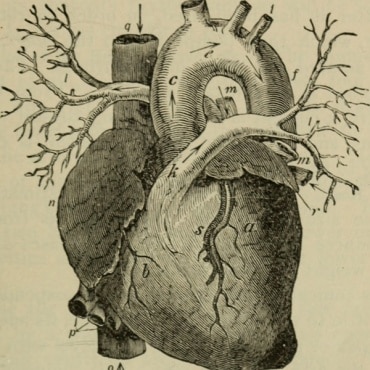
A symbol for the heart
With that insight, and trying to create a symbol for Hrungnir’s heart, the triangular symbol they came up with is a pretty good match. It is intricate, sort of looping back into itself, and just as a heart with the arteries and aorta, it is “spiky”.
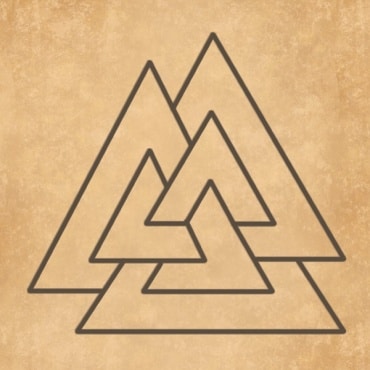
The actual Valknut symbol
Across Scandinavia, and even into Northern Germany, the Valknut symbol is actually well known, I’d even say really well known as we use it in a type of road signs. It is the sign for cultural sites, and can mean anything from a museum, to a Viking Age, or an even older site of historical interest.
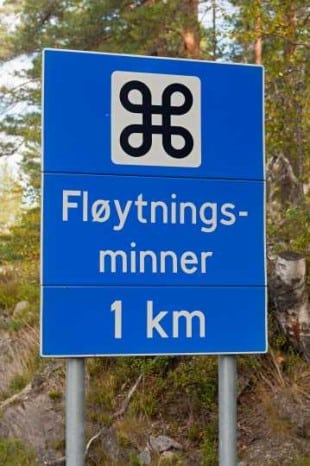
Even if you haven’t been to Scandinavia, you have likely seen it as it’s also the “command key” on Apple computers. The looped square (⌘), often recognized as Saint John’s Arms or Saint Hannes cross, has various names across cultures, such as the sankthanskors in Swedish, johanneskors in Danish, and hannunvaakuna in Finnish. Its design features a square adorned with outward-pointing loops at each corner.
In Norway, it can be traced back to at least the late 16th century with the name Valknute. It was also in use in the Viking Age, as seen on this belt buckle below, found on Onsøy (Odin’s island) in the south-east of Norway.
The Hrungnir’s heart symbol in use
The triangular symbol, mistakenly called the Valknut, which I believe was called Hrungnir’s heart, was used quite a lot. It has in fact turned up on a number of runestones as well as on some Viking Age artifacts found on the Oseberg burial ship.
One notable find is its presence on the so-called “Nene River Ring”, an exquisite Anglo-Saxon gold finger ring that hails from the 8th to 9th centuries. This symbol’s allure wasn’t just limited to jewelry; it found its way into the very heart of Viking craftsmanship. The Oseberg Ship, a Viking Age marvel discovered near Tønsberg, Norway, showcases the Hrungnir’s heart symbol in all its glory. The ship’s wooden bed, a testament to the intricate artistry of the time, features the symbol carved into a beautifully stylized bedpost. Furthermore, the Oseberg tapestry fragments, remnants of a once grand tapestry found within the ship burial, also proudly display it.
In addition to these prominent examples, the Hrungnir’s heart symbol extended to Gotland, east of Sweden, where it prominently adorns two picture stones: the Stora Hammars I stone and the Tängelgårda stone. These artifacts, each with its unique story, collectively paint a vivid picture of the symbols significance and widespread appeal in ancient Germanic culture.
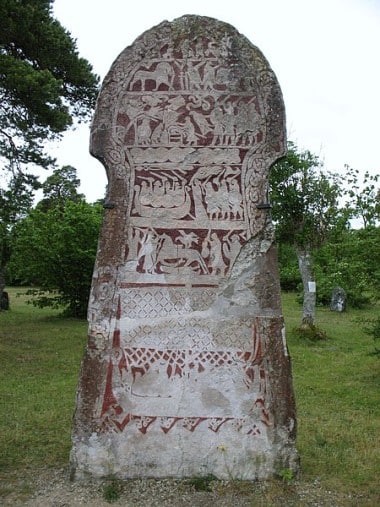
Two versions of the symbol
Interestingly, the symbol isn’t confined to a singular representation. Historically, it has manifested in two distinct forms. One is the unicursal form, which is topologically akin to a trefoil knot, reminiscent of the triquetra. This particular rendition of the valknut can be observed on the Tängelgårda stone, see below. The other is the tricursal form, which comprises three interlinked triangles, bearing topological similarities to the Borromean rings. This tricursal depiction graces one of the Stora Hammars stones and is also evident on the Nene River Ring and the Oseberg ship bed post. While other topological variations might be conceivable, these two forms stand out as the only historically attested versions discovered to date.
It is interesting that these two fascinating runestones, both found on the island of Gotland, depict two different versions of the symbol. Without wanting to speculate, it might seem they were used interchangeably.
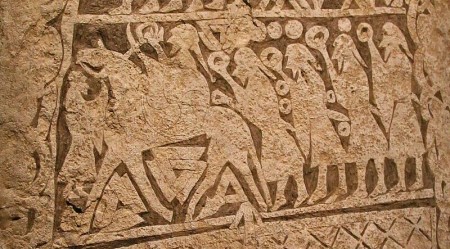
Symbolic Meaning of Hrungnir’s Heart
Based on the finds, some people have suggested an association between the symbol, and a death cult surrounding Odin. The connection seems less clear-cut to me, for example, the symbol adorning a ring doesn’t quite fit into this narrative.
Certainly though, from the mentioned runestones, there seems to be a link to Odin, and or death. On the Stora Hammars I stone, there is a scene that seems to depict the ritualistic killing of a person. Above him are a couple of birds which one might call raven-like. In several myths Odin will be associated with his ravens and they are seen as apparitions of him.
In the Tängelgårda image stone, there is a man on a horse, and the triangular symbols are beneath the horse. The man on the horse is holding a shield adorned with what might look like three horns of Odin. The horse might be Sleipnir and the man could very well be Odin.
Personally, based on the symbol also having been found on artifacts from the Oseberg burial ship and a personal jewelry item like a ring, I think there might be some other meaning behind it.
Hrungnir’s heart symbol for the cycle of life and death
Given the triangular symbol commonly known as Valknut is in fact the symbol Snorri refers to as Hrungnir’s heart, maybe that also points to its symbolism.
Central to Norse mythology is the concept of cycles of life. This extends to life and death, and the afterlife of humans, to Ragnarök, and the world prophesied to rise from the ashes of the old. The interlinked triangles in the Hrungnir’s heart symbol might be a great representation of that. Everything goes around and around in cycles.
On a more basic level, it could have been associated with bravery, specifically in meeting death. To the people of the Viking Age, death was really just the start of a journey to the afterlife. That could also be a very individual journey, depending on how you died. Maybe a Hrungnir’s heart symbol could help one on that journey. In the same way, a warrior or king might have a ring with the same symbol when riding into battle.
The sad, or fascinating truth is that we will likely never know exactly what the symbol meant in its time. Anyone claiming otherwise doesn’t have any good facts to back up their claims.
Frequently Asked Questions
The actual Valknut symbol is a square with twisted loops at each corner, similar to the Bowen knot.
Hrungnir was a stone jötun (giant) in Norse mythology, known for his duel with Thor and his unwavering heart.
Often associated with Odin, Hrungnir’s Heart represents life, death, and rebirth cycles. It’s also linked to honor, bravery, and possibly the journey after death.

